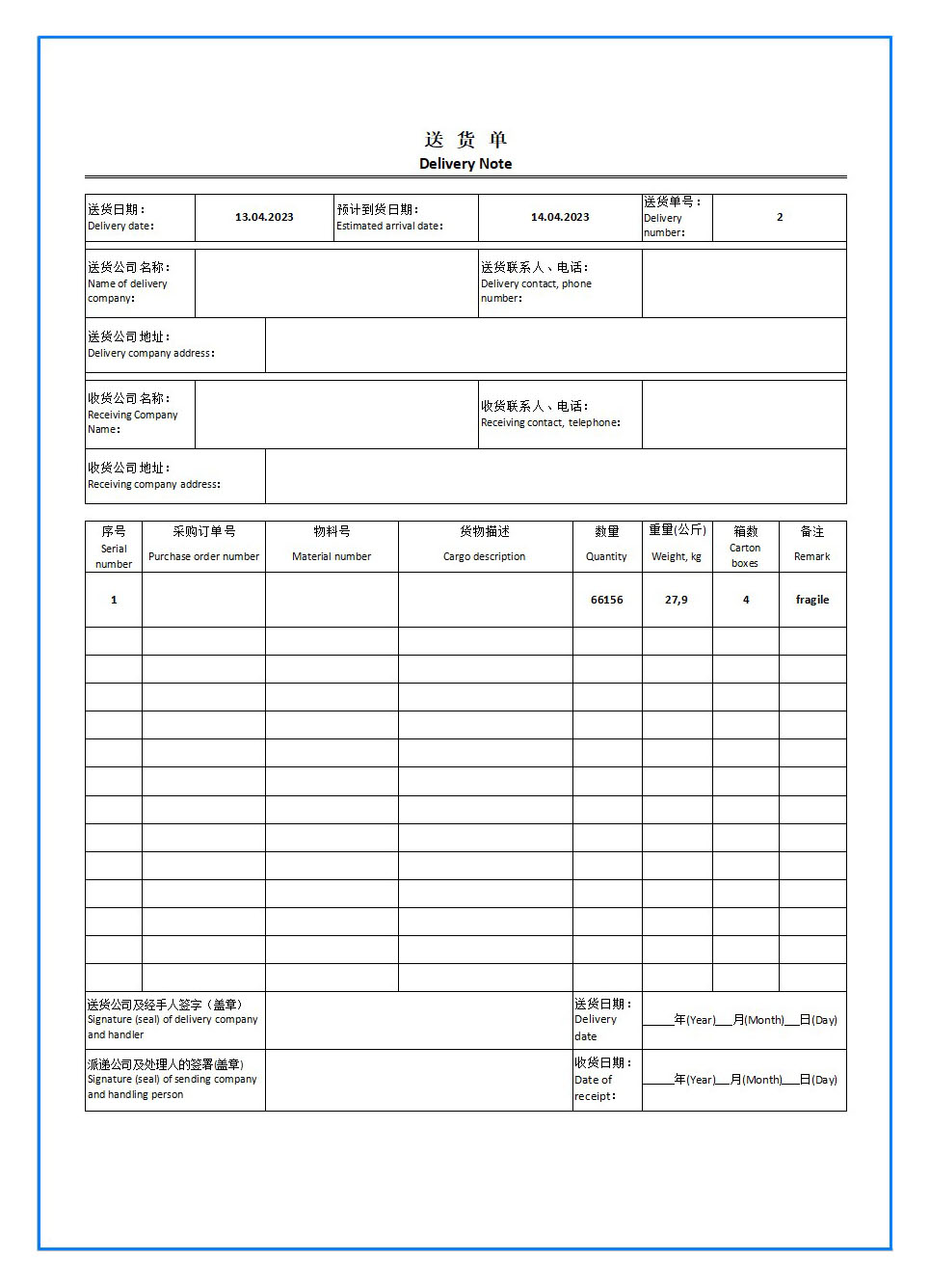
Delivery Note
Delivery note is a commercial document accompanying the shipment and transportation of goods, which indicates the description and quantity of the goods being transported. A copy of the document, signed by the recipient, is then returned to the supplier or seller as proof of delivery.
What is the delivery note used for?
The main purpose of using a delivery note is that it serves as an inventory of the entire contents of the shipment. Provides detailed shipment information such as: date of shipment, names and addresses of sender and recipient, and description of items shipped.
If a dispute or discrepancy arises during the delivery process, the delivery note will help resolve the issue and resolve the dispute.
The delivery note also serves as proof of delivery of the goods. Since the recipient signs this document upon receiving the shipment, it serves as proof in case of any discrepancies.
What is the difference between a delivery note and a packing list?
The delivery note confirms delivery of the goods to the buyer. It contains information such as the name of the product, its quantity, delivery date, name and address of the recipient, as well as other information about the shipment.
The packing list contains detailed information about the goods: how the goods were packed, their volume, the weight of one unit of goods and the total, gross and net weight. This is not on the delivery note.
What should the delivery note include?
The following is information that is typically included on the delivery note.
- Shipping Date: This is the date the shipment was shipped.
- Sender Information: Sender’s name, address, and contact information.
- Recipient Information: Recipient’s name, address, and contact information.
- Description of items:
- Quantity
- Weight
- serial numbers
- stock keeping unit (SKU) codes
- Shipping Instructions: How to take transportation precautions or who to contact upon arrival.
- Order number
- Signature or stamp of the recipient confirming receipt of the goods.

